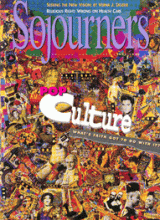The reclamation of Chicano artistic life that came out of the movements of the 1960s has provided the images and symbols that fuel the Latino community's struggle to find itself. Because it is part of both North American and Latin American society, yet secure in neither, Chicano culture continues to disrupt the neat lines that define borders for many Americans. In doing so, it creates a distinctly mestizo culture.
This is a syncretic culture that breathes anew with each immigrant who crosses the border carrying the experience of life in his or her heart. It expands with each young member of La Raza who graduates from high school-swells with each act of art, with each word of poetry, with every song; and finally increases each time a child is taught to remember where-and what-his or her people came from.
Even as community-oriented Latino art centers and artists strive to resist assimilation, "border art" is becoming increasingly trendy. This is a natural consequence when the hungry souls of the cultural manufacturers spy a piece of culture that is breathing with life and seek to nourish their starving souls with it. Unfortunately, it is often only made available to the masses after it has been killed, cut to pieces, packaged, and bears little re- lation to the community that bore it.
Read the Full Article

